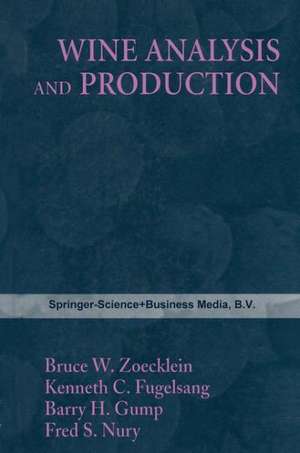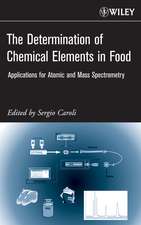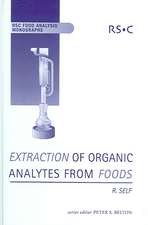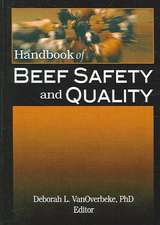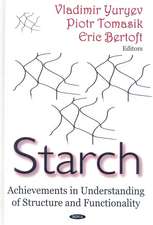Wine Analysis and Production
Editat de Zoeckleinen Limba Engleză Paperback – 14 feb 2013
Preț: 1016.60 lei
Preț vechi: 1239.76 lei
-18% Nou
Puncte Express: 1525
Preț estimativ în valută:
194.55€ • 202.36$ • 160.61£
194.55€ • 202.36$ • 160.61£
Carte tipărită la comandă
Livrare economică 15-29 aprilie
Preluare comenzi: 021 569.72.76
Specificații
ISBN-13: 9781475769807
ISBN-10: 1475769806
Pagini: 640
Ilustrații: XVIII, 621 p. 20 illus.
Dimensiuni: 152 x 229 x 34 mm
Greutate: 0.92 kg
Ediția:Softcover reprint of the original 1st ed. 1995
Editura: Springer Us
Colecția Springer
Locul publicării:New York, NY, United States
ISBN-10: 1475769806
Pagini: 640
Ilustrații: XVIII, 621 p. 20 illus.
Dimensiuni: 152 x 229 x 34 mm
Greutate: 0.92 kg
Ediția:Softcover reprint of the original 1st ed. 1995
Editura: Springer Us
Colecția Springer
Locul publicării:New York, NY, United States
Public țintă
ResearchDescriere
Winemaking as a form of food preseIVation is as old as civilization. Wine has been an integral component of people's daily diet since its discovery and has also played an important role in the development of society, reli gion, and culture. We are currently drinking the best wines ever produced. We are able to do this because of our increased understanding of grape growing, biochemistry and microbiology of fermentation, our use of ad vanced technology in production, and our ability to measure the various major and minor components that comprise this fascinating beverage. Historically, winemakers succeeded with slow but gradual improvements brought about by combinations of folklore, obseIVation, and luck. How ever, they also had monumental failures resulting in the necessity to dis pose of wine or convert it into distilled spirits or vinegar. It was assumed that even the most marginally drinkable wines could be marketed. This is not the case for modem producers. The costs of grapes, the technology used in production, oak barrels, corks, bottling equipment, etc. , have in creased dramatically and continue to rise. Consumers are now accustomed to supplies of inexpensive and high-quality varietals and blends; they con tinue to demand better. Modem winemakers now rely on basic science and xvi Preface xvii the systematic application of their art to produce products pleasing to the increasingly knowledgeable consumer base that enjoys wine as part of its civilized society.
Cuprins
1 Introduction.- 2 Application of Sensory Evaluation in Wine Making.- 3 Grape Maturity and Quality.- 4 Hydrogen Ion (pH), and Fixed Acids.- 5 Carbohydrates.- 6 Alcohol and Extract.- 7 Phenolic Compounds and Wine Color.- 8 Nitrogen Compounds.- 9 Sulfur-Containing Compounds.- 10 Sulfur Dioxide and Ascorbic Acid.- 11 Volatile Acidity.- 12 Metals, Cations, and Anions.- 13 Sorbic Acid, Benzoic Acid, and Dimethyldicarbonate.- 14 Oxygen, Carbon Dioxide, and Nitrogen.- 15 Tartrates and Instabilities.- 16 Fining and Fining Agents.- 17 Winery Sanitation.- 18 Microbiology of Winemaking.- 19 Cork.- 20 Laboratory Procedures.- Appendix I. Tables of Constants, Conversion Factors.- Appendix II. Laboratory Safety.
